North Carolina is home to a rich tapestry of historic sites that offer a glimpse into the state’s diverse past. From the rugged coast to the picturesque mountains, these sites preserve and share stories of Native American settlements, early European explorers, Revolutionary War battles, Civil War conflicts, and the struggles and triumphs of various communities throughout history. The NC Historic Sites encompass iconic landmarks such as the Roanoke Island Festival Park, where the Lost Colony of Roanoke comes to life, and Historic Halifax, where the historic Halifax Resolves were adopted in 1776. Visitors can explore preserved battlefields like Bentonville and Alamance, as well as plantations like Somerset Place, highlighting the complex history of slavery in the state. These sites serve as living museums, providing educational opportunities and a deeper understanding of North Carolina’s cultural heritage for residents and tourists alike. Click on the images below to learn more about each of the Historic Sites.

Alamance Battleground is a State Historic Site in Burlington, NC, that monuments the 1771 battle of “the Regulators” against royal governor William Tryon’s militia. The Regulators were a group of backcountry farmers enraged by how royals and public officials took advantage of them. Despite attempts at peaceful solutions for their grievances, the government did not respond, which ignited violence. Although the Regulators were defeated, the battle was a spark, along with many others, that contributed to the start of the Revolutionary War.
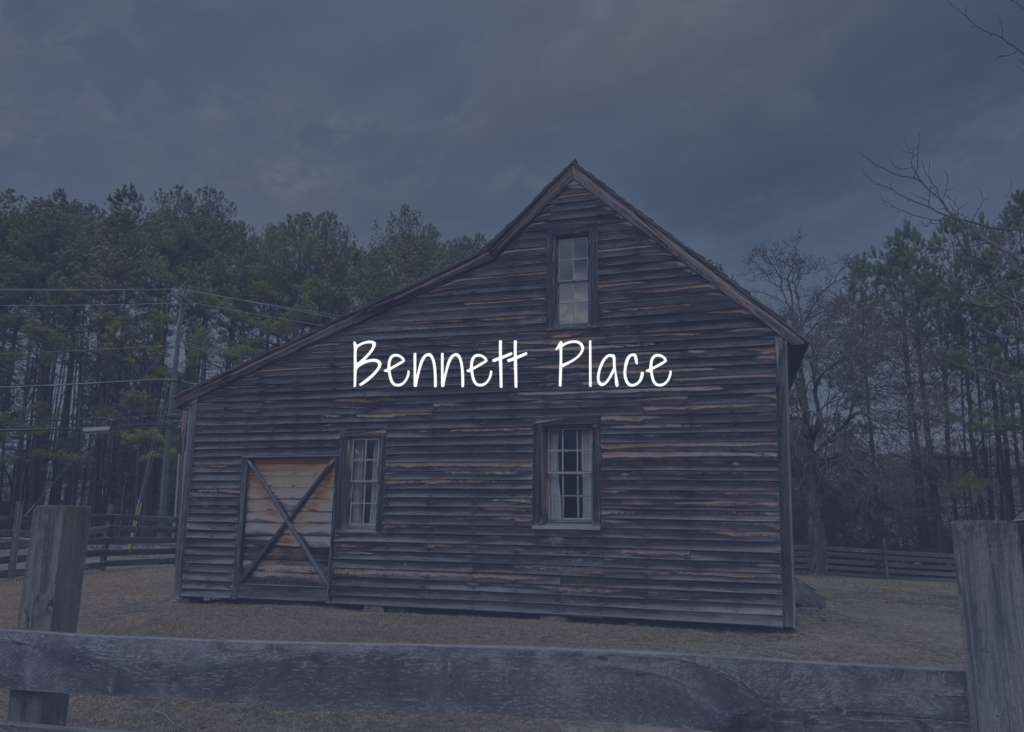
Bennett Place is a State Historic Site in Durham, NC, which was the site where General Johnston and Major General Sherman met to complete the terms of the largest surrender in the Civil War. Bennett Place includes a visitor center, which has an extensive museum gallery, a theater, and The Everett-Thissen Research Library with over 1000 volumes. Along with exploring the visitor center, guests can tour the property, walk the trails, or picnic.
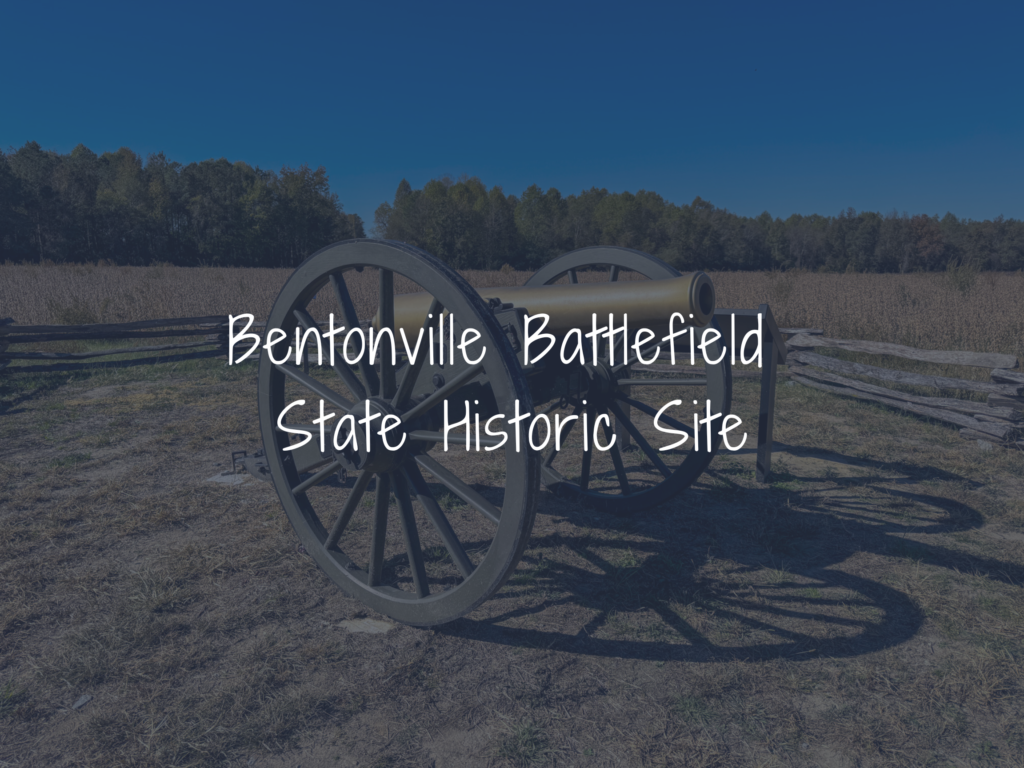
Bentonville Battlefield State Historic Site in North Carolina is a significant landmark preserving the memory of one of the largest Civil War battles fought in the state. This historic site encompasses over 2,000 acres of rolling countryside, where the Battle of Bentonville took place from March 19 to March 21, 1865. The battle marked the last major Confederate offensive operation of the Civil War and involved over 80,000 soldiers. Today, visitors to Bentonville Battlefield can explore preserved earthworks, artillery positions, and a visitor center featuring exhibits and artifacts from the battle. The site offers guided tours, living history events, and educational programs, allowing visitors to delve into the experiences of soldiers and civilians during this pivotal moment in American history. Bentonville Battlefield State Historic Site serves as an important reminder of the sacrifices and struggles endured during the Civil War era.
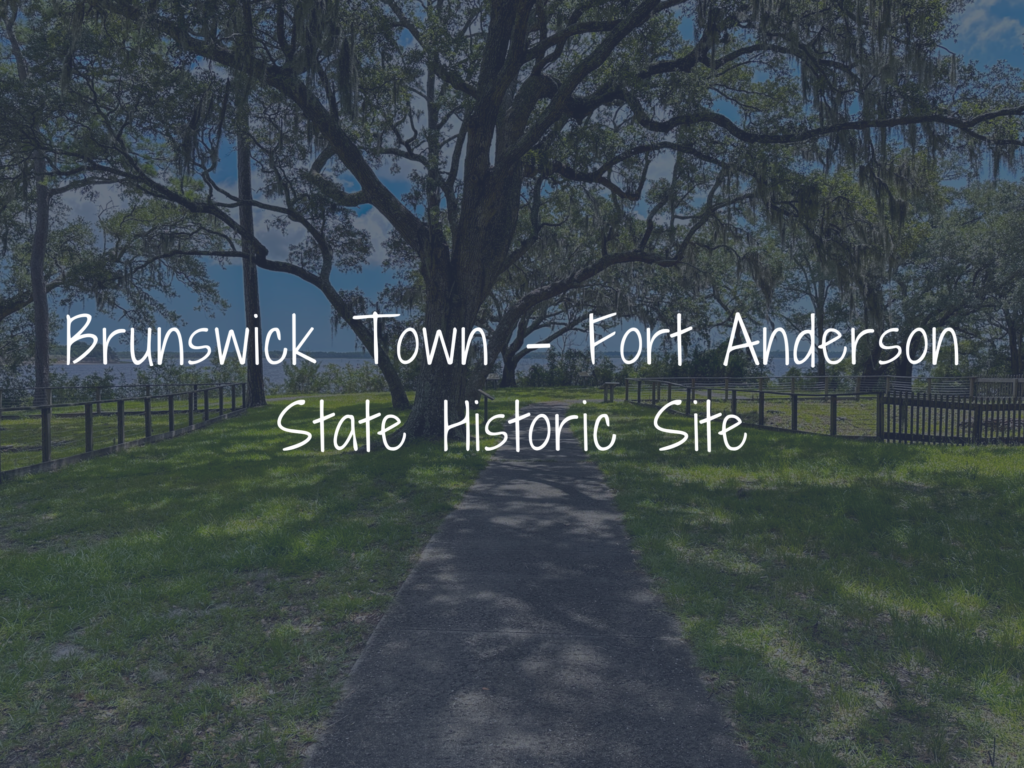
Brunswick Town – Fort Anderson State Historic Site, located near Southport, North Carolina, offers a captivating glimpse into the region’s colonial and Civil War history. This site encompasses the remains of two significant historical landmarks. Brunswick Town was once a bustling colonial port before it was ravaged during the Revolutionary War. Visitors can explore the archaeological ruins of this early settlement, including the foundations of homes, streets, and public buildings. Nearby, Fort Anderson stands as a reminder of the Civil War era, constructed to defend the Cape Fear River. The site features well-preserved earthworks and interpretive exhibits that detail the fort’s role in the war. Together, these sites provide a rich narrative of North Carolina’s past, making Brunswick Town – Fort Anderson State Historic Site a must-visit destination for history enthusiasts.

The Charlotte Hawkins Brown Museum in Sedalia, NC, preserves the legacy of the Palmer Memorial Institute and the incredible vision of Dr. Charlotte Hawkins Brown. Dr. Brown believed that the students should come away with an experience that left them “educationally efficient, religiously sincere, and culturally secure.” As of 1922, the Palmer Institute was one of the few schools for African Americans that was fully accredited. The Museum has preserved many of the buildings from the Institute and is continuing to think of creative ways to use all of the buildings on site. It is designated as an NC Historic Site and features a knowledgeable staff that can provide great information on the history and the importance of the school.

The CSS Neuse Museum in Kinston, North Carolina, is a captivating testament to the Civil War era and the naval history of the region. Housing the remnants of the CSS Neuse, one of the few remaining Confederate ironclad gunboats, the museum offers visitors a remarkable journey back in time. Exhibits showcase artifacts recovered from the Neuse, providing a tangible connection to the past and offering insight into the daily lives of sailors during the war. Interactive displays and informative presentations illuminate the technological innovations and strategic importance of naval warfare during this turbulent period in American history. Through its comprehensive collection and engaging exhibits, the CSS Neuse Museum serves as a valuable educational resource, preserving the legacy of the Neuse and the courageous individuals who served on ironclads in general.

Located in Durham, NC, Duke Homestead is a State Historic Site and Tobacco Museum that shares the history of Washington Duke and his family. The Duke family lived on the property in the mid-1800s and developed tobacco manufacturing processes after the Civil War. Guests can take a 45-minute guided tour around the historic property, explore the museum and visitor center, and learn about farm life.
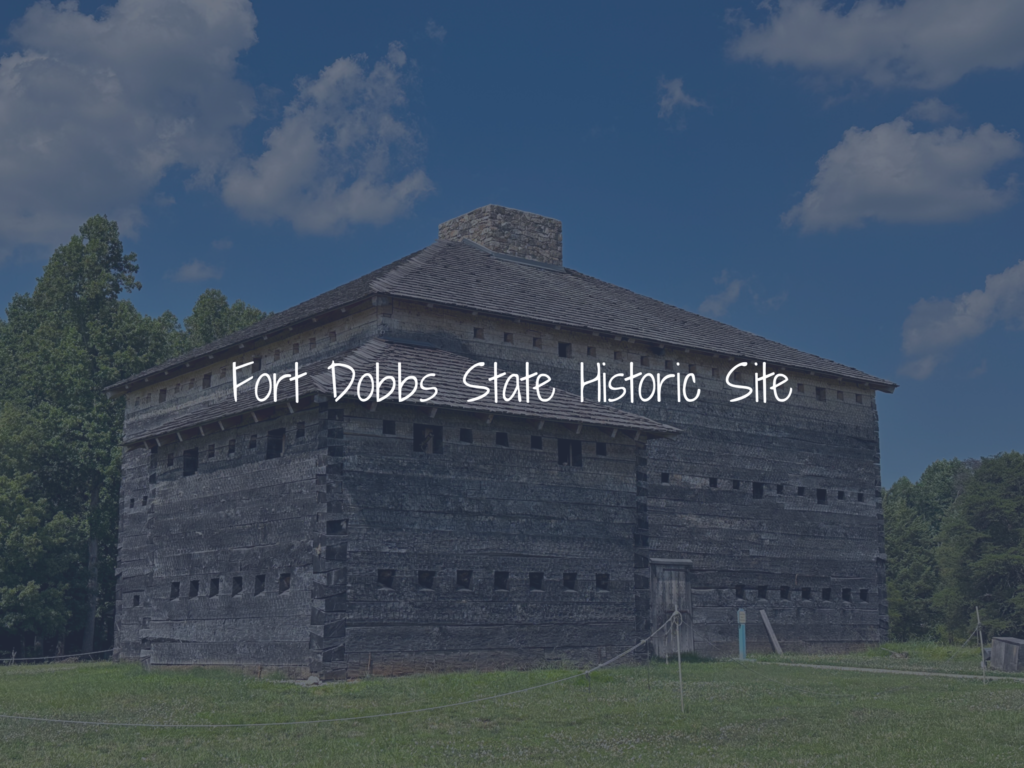
Fort Dobbs was constructed between 1755 and 1756 (Governor Arthur Dobbs ordered the construction) and was the only permanent frontier provincial fort in North Carolina. The Fort was a representation of the complicated relationship between the English, French, and Cherokee during the time period. The Cherokee were considered allies of the English for much of the period, but Anglo-Cherokee relations declined during the late 1750s and early 1760s, which led to the battle at Fort Dobbs on the night of February 27, 1760. It was estimated that over sixty Cherokees attacked the Fort, which began with an attempt to draw out the provincial soldiers from the Fort. The attack on Fort Dobbs was just one of many Cherokee attacks on forts in Virginia, North Carolina, and South Carolina. After the Treaty of Paris was signed between France and England, the French and Indian War concluded, and Fort Dobbs became unnecessary and was abandoned by 1766. The original Fort was disassembled for its lumber after being abandoned, and archaeological exploration of the area began as early as 1847.

Fort Fisher played a huge role in the Civil War, while North Carolina kept the port of Wilmington open to blockade runners routing supplies to the Confederate armies. It was the last supply route to Robert E. Lee’s Army. The Fort fell after a massive attack in January 1865, and the defeat led to the fate of the Confederacy. Visitors to the historic site can walk scenic trails, explore historic artifacts, and learn about Fort Fisher’s history. Visiting the site is free, and guided tours are scheduled throughout the year.
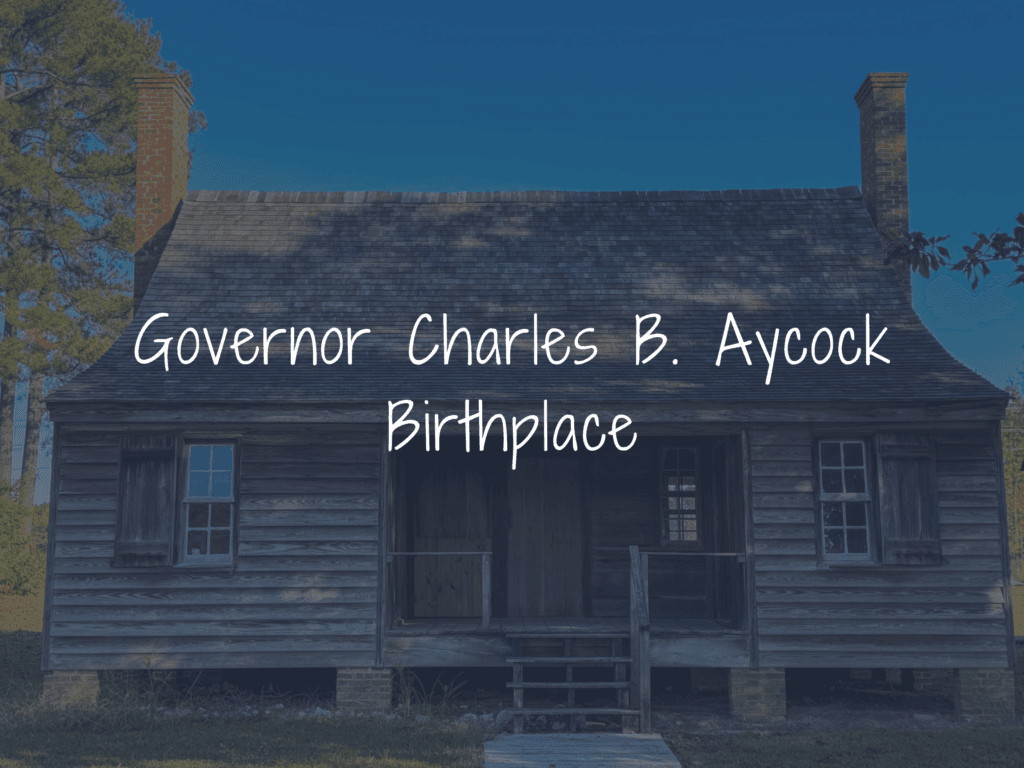
The Charles B. Aycock Birthplace in Fremont, North Carolina, stands as a tribute to one of the state’s most influential figures. Set amidst the tranquil countryside, this historic site preserves the humble beginnings of Charles Brantley Aycock, a prominent leader in North Carolina’s history. Born in 1859, Aycock rose to prominence as a progressive governor in the early 20th century, advocating for education reform and rural development. The birthplace offers visitors a glimpse into Aycock’s formative years, with a faithfully restored farmhouse and surrounding grounds that reflect the simplicity of rural life in the late 19th century. Through exhibits and guided tours, visitors can explore Aycock’s legacy and the enduring impact of his efforts to improve education.

Bath, NC, is steeped in colonial history, and visiting the Historic Bath State Historic Site offers a chance to experience and understand the lives of the early settlers, their culture, and the town’s significant role in North Carolina’s history. In fact, Bath was once considered the capital of the early colony. With multiple historic structures under the Historic Site’s control, we recommend one of its tours to get a look inside many of these structures (the Palmer-March and Bonner Houses). The Historic Site also has an incredible museum with multiple interactive exhibits and artifacts to check out.

The Historic Edenton State Historic Site, located in Edenton, North Carolina, is a significant destination preserving the town’s rich history as one of the oldest in the state. This site features well-preserved historic buildings from the 18th and 19th centuries, including the notable Cupola House, the 1767 Chowan County Courthouse, James Iredell House, and the Roanoke River Lighthouse. The Edenton Bell Battery Cannon on the waterfront reflects the town’s role in the American Revolution. Visitors can explore the picturesque waterfront, learn about maritime history, and delve into the colonial and early American heritage of Edenton at this historic site. The visitor center provides helpful information for self-guided tours and offers guided tours, making it a compelling destination for history enthusiasts and those interested in North Carolina’s cultural legacy.
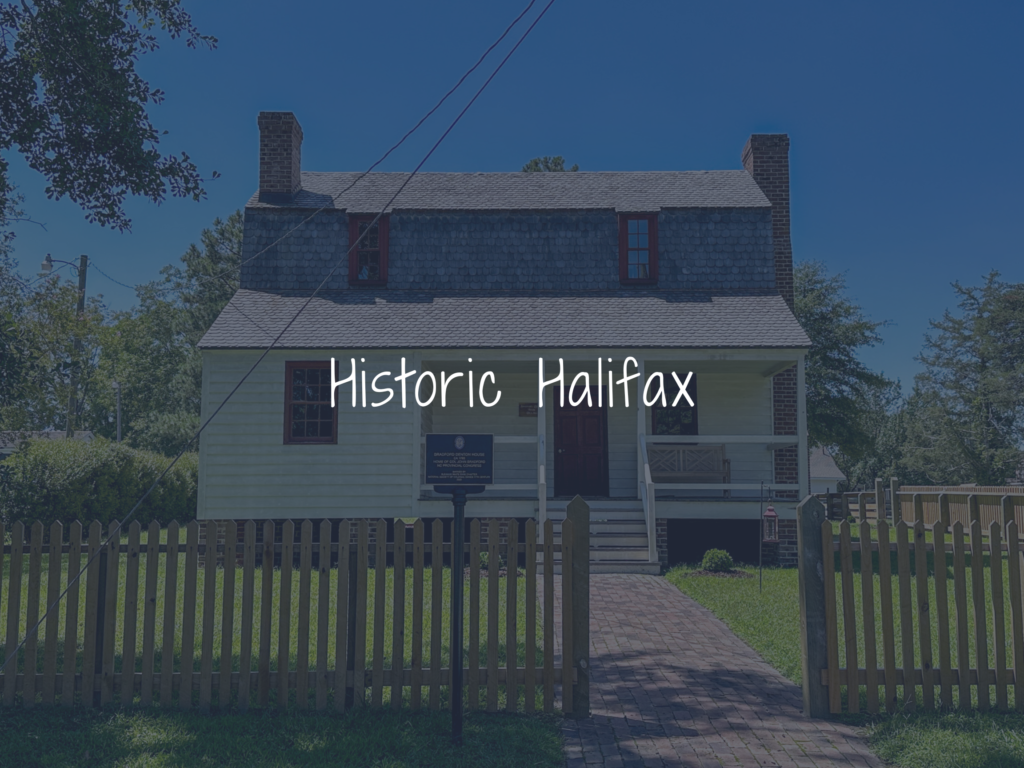
Historic Halifax presents an incredible opportunity to explore many different colonial-era structures that played an important role in American History. On April 12, 1776, North Carolina became the first colony to officially recommend independence from British rule by adopting the Halifax Resolves. This event was considered a crucial step towards the United States declaring its independence. Many of the buildings are open for self-guided tours during open hours, with the buildings being spread out on multiple streets. It really is impressive how many historic structures the Historic Site manages, which includes the Monfort Archaeology Museum, Burgess Law Office, Eagle Tavern (which features a number of fantastic exhibits), Owens House, Clerks Office, Sally-Billy House, Jail, a Visitor Center, and a nearby Underground Railroad Trail.
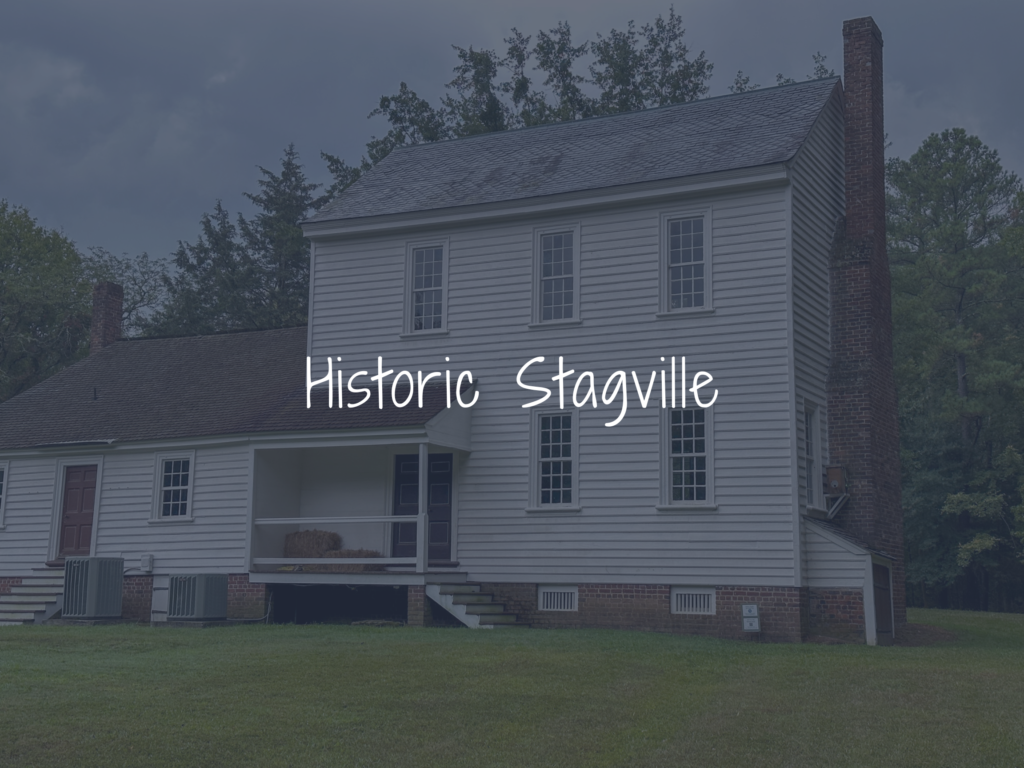
Historic Stagville is located in Durham County, North Carolina, and serves as a poignant reminder of the complex history of the antebellum South. Once one of the largest plantations in the region, Stagville spanned thousands of acres and was home to hundreds of enslaved individuals who worked under the yoke of bondage. Today, Stagville’s preserved grounds and restored structures offer visitors a solemn yet essential window into the lives and struggles of those who lived and worked here. From the opulent Bennehan House, which echoes wealth and privilege, to the humble slave quarters that bear witness to the resilience and endurance of the human spirit, Historic Stagville invites visitors to confront the uncomfortable truths of America’s past. Additionally, it honors the resilience and contributions of those who were once enslaved on its grounds. This historic site serves as a vital educational resource and a solemn reminder of the importance of understanding and reckoning with the legacies of slavery in shaping the nation’s history.
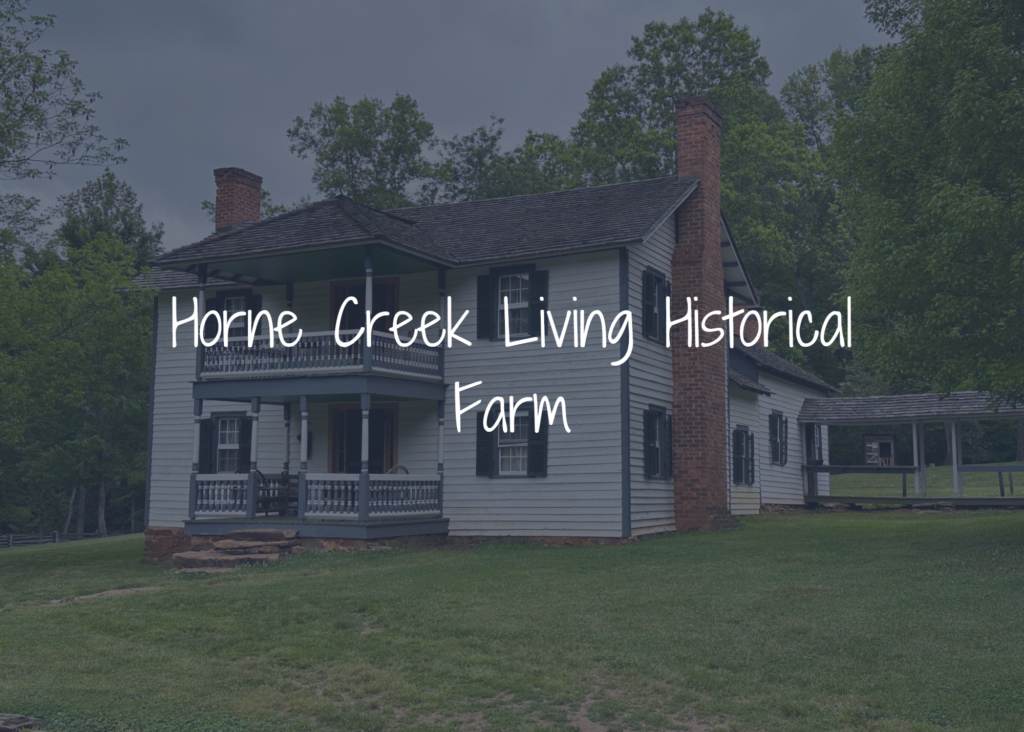
The Horne Creek Living Historical Farm in Surry County features the original Hauser Farmhouse built around 1880 and other structures on the property built between the mid-1800s and early 1900s. Many of the structures, including the house, are open to the public to walk through when the Farm is open. The Farm is also great for kids because they try to operate it as it would have been in the early 1900s, which includes a few animals, such as a mule, goats, and sheep. The property is beautiful and is worth the trip to learn some of the early history of Surry County and to take in the scenery.
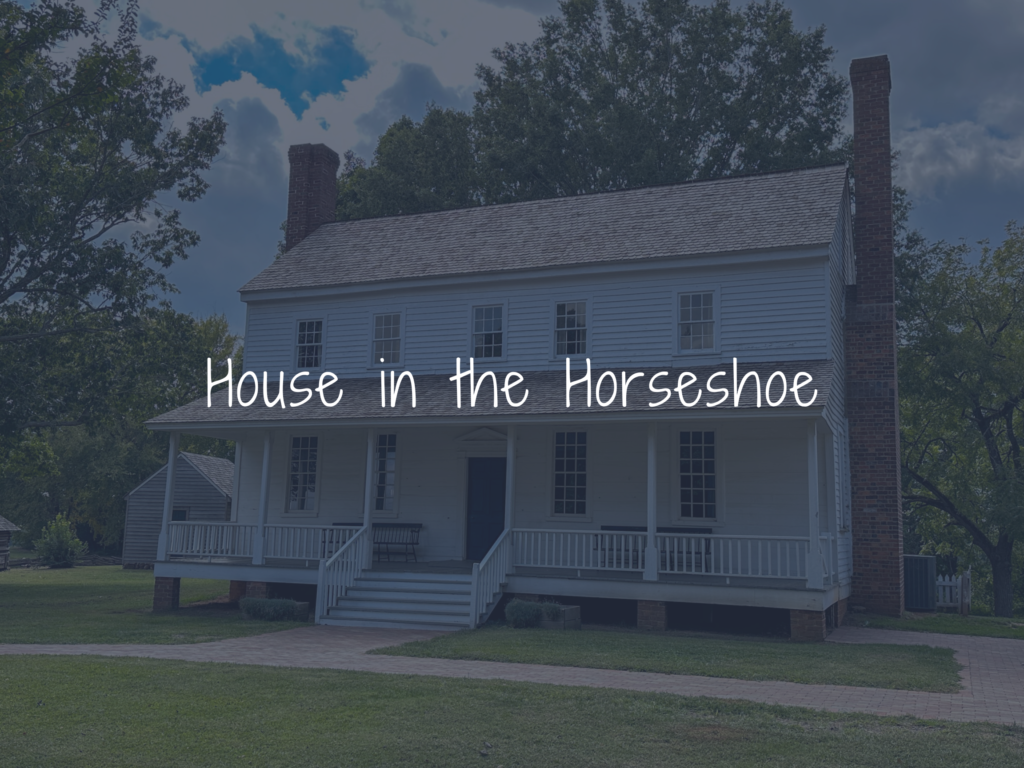
The House in the Horseshoe, built in 1772 for Philip Alston, a plantation owner, gained historical significance during the American Revolution when it became the site of a pivotal skirmish in 1781. Loyalists, led by David Fanning, attacked the House, leading to a day-long standoff. The house still has holes in its exterior from where musket balls hit the structure during the skirmish (we thought that was pretty cool when we visited). The nickname “House in the Horseshoe” comes from where the house is situated on the Deep River. The House was purchased by the Moore County Historical Association in 1954, and it became a North Carolina Historic Site in 1971. The House in the Horseshoe offers visitors a glimpse into the events that surrounded the skirmish on its property and the broader challenges faced by North Carolinians during the Revolutionary War.
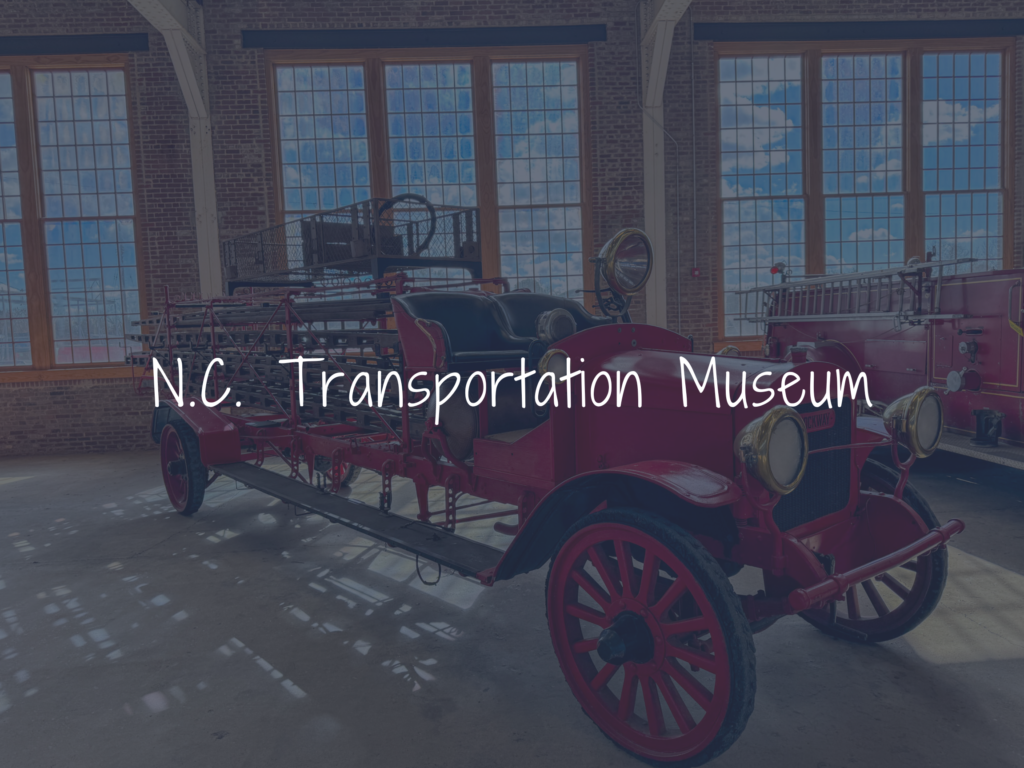
The North Carolina Transportation Museum is located in Spencer, North Carolina. It is a historic site that preserves and showcases the state’s transportation history. The museum is situated on the site of the former Southern Railway’s Spencer Shops, which was a major steam locomotive repair facility. Visitors to the N.C. Transportation Museum can explore various exhibits, including vintage cars, trucks, and aircraft. One of the highlights is the impressive collection of locomotives and railcars. The museum also offers train rides on certain occasions, allowing visitors to experience a bit of railroad history.
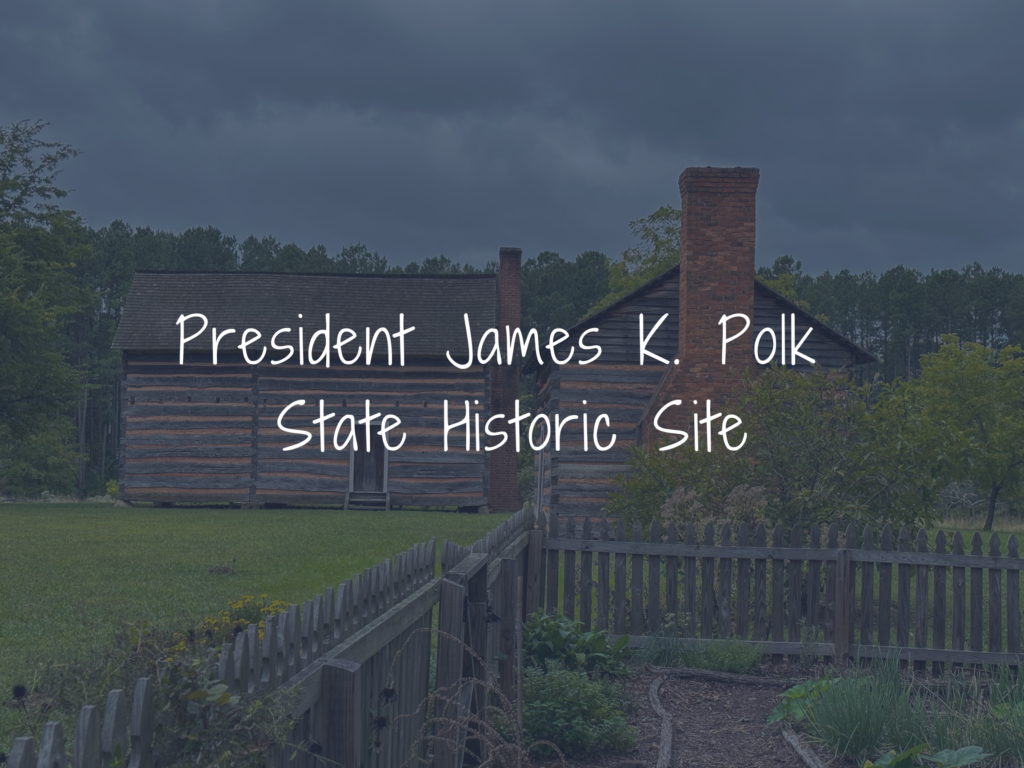
The President James K. Polk State Historic Site is a must-visit destination for anyone interested in American history. Located in Pineville, North Carolina, this site is dedicated to preserving the birthplace of James K. Polk, the 11th President of the United States. As soon as you step onto the grounds, you’ll feel as though you’ve been transported back in time to the early 19th century. You can explore the reconstructed homestead and gain insights into Polk’s formative years. From the modest log cabin where he spent his childhood to the meticulously preserved outbuildings, including a kitchen, every corner tells a story of Polk’s humble beginnings and his rise to prominence on the national stage. The site offers engaging exhibits, guided tours, and educational programs that illuminate Polk’s pivotal role in shaping American history. You can learn about his expansionist policies and his leadership during the Mexican-American War. Whether you’re a history enthusiast, a student of politics, or simply curious about the roots of American democracy, the President James K. Polk State Historic Site offers a rich tapestry of experiences that will transport you to the past and inspire reflection on the nation’s journey.

Reed Gold Mine, located in Cabarrus County, North Carolina, holds a significant place in American history as the site of the first documented commercial gold found in the United States. Discovered in 1799 by Conrad Reed, a local farmer’s son, while he was playing in Little Meadow Creek, the mine sparked the nation’s first gold rush. This momentous event led to the establishment of mining operations and communities in the area, contributing to the economic growth of the region. Today, Reed Gold Mine is a historic site operated by the North Carolina Department of Natural and Cultural Resources, offering visitors the chance to explore its underground tunnels, witness demonstrations of historic mining techniques, and learn about the impact of gold discovery on North Carolina and the nation.

Roanoke Island Festival Park stands as a vibrant testament to the rich history and cultural tapestry of North Carolina’s Outer Banks. Nestled on the shores of Manteo, this immersive destination offers visitors a captivating journey through time, celebrating the island’s pivotal role in early American history. From the meticulously reconstructed Elizabeth II, a 16th-century sailing vessel reminiscent of those that navigated the waters during the Roanoke voyages, to interactive exhibits and live demonstrations showcasing the life of settlers, Roanoke Island Festival Park offers an engaging exploration of the past. The park’s lush waterfront setting, coupled with its dynamic educational experiences, makes it a must-visit destination for history enthusiasts and curious minds alike, inviting all to uncover the mysteries and marvels of North Carolina’s Roanoke Island.
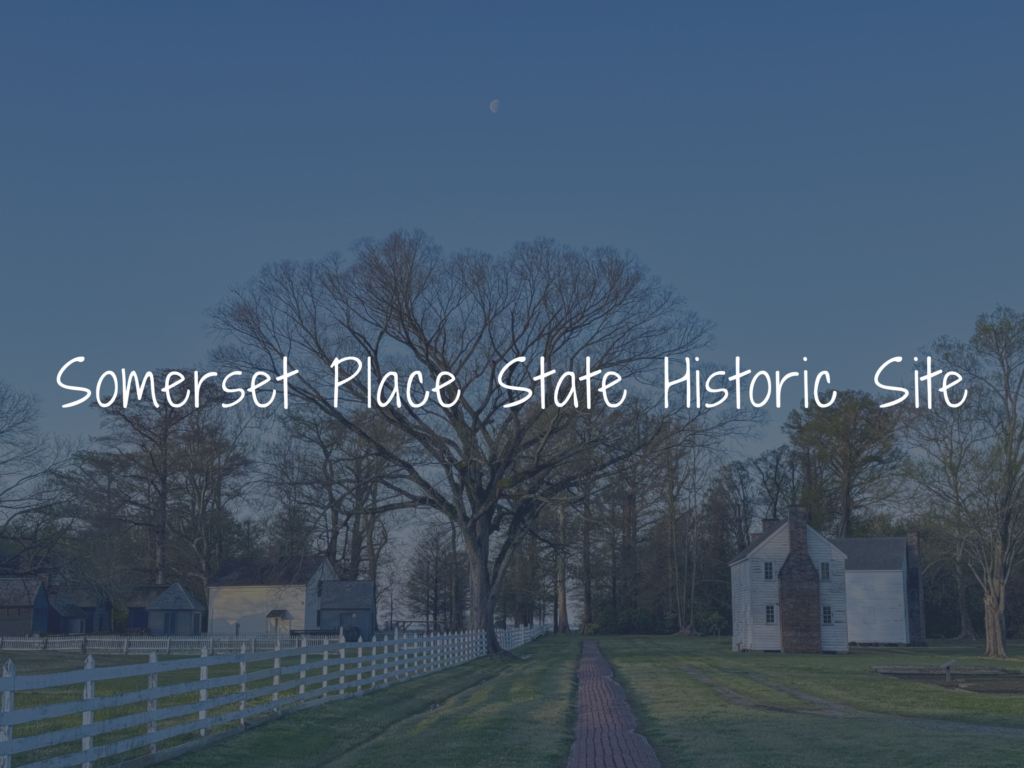
Somerset Place State Historic Site, nestled in the rural landscapes of northeastern North Carolina, stands as a poignant reminder of the antebellum South’s complex history. This plantation-turned-museum offers visitors a glimpse into the lives of the enslaved individuals who toiled in its fields and within its grandiose manor house. Founded in the late 18th century, Somerset Place flourished as one of the largest plantations in the region, cultivating rice, corn, and other cash crops through the labor of hundreds of enslaved people. Today, the site’s meticulously preserved buildings and expansive grounds provide a solemn yet insightful exploration into the realities of plantation life, highlighting the resilience, creativity, and enduring legacy of those who were once bound to its soil. Through guided tours, interactive exhibits, and educational programs, Somerset Place invites visitors to engage with the complexities of America’s past, fostering a deeper understanding of the enduring impact of slavery on the nation’s history and culture.
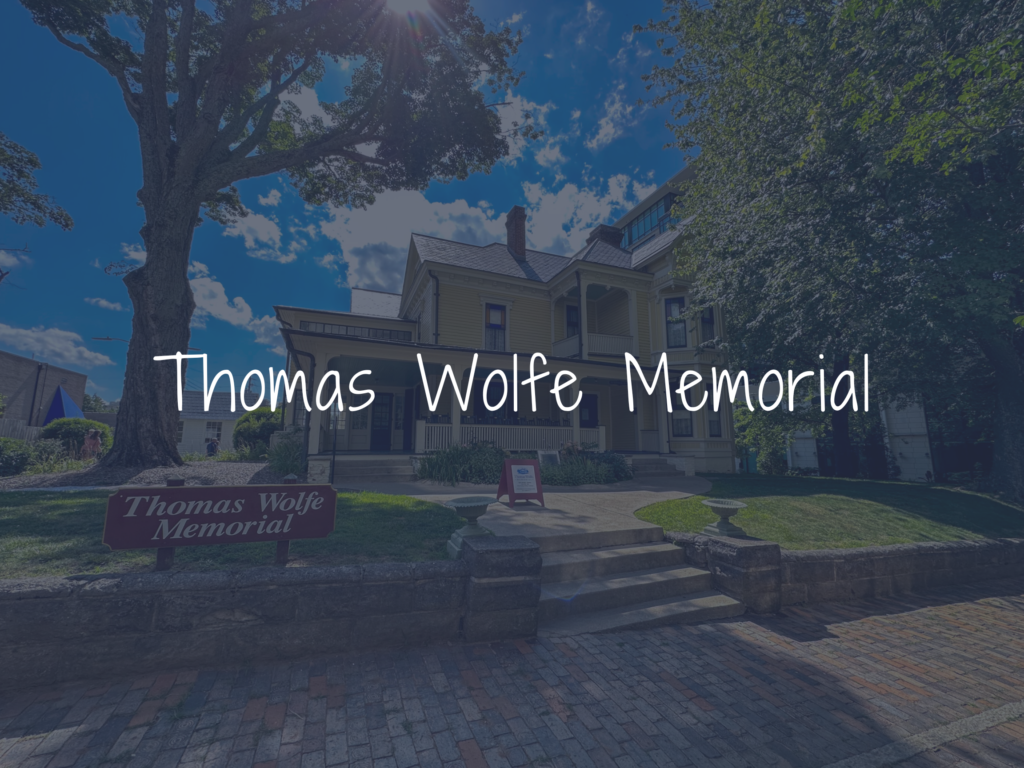
The Thomas Wolfe Memorial, located in Asheville, North Carolina, stands as a tribute to one of America’s influential literary figures. Thomas Wolfe, born in Asheville in 1900, gained fame for his vivid and autobiographical novels, such as “Look Homeward, Angel.” The memorial comprises Wolfe’s childhood home, a large Victorian boardinghouse operated by his mother, Julia Wolfe. Preserved and maintained by the state as an NC State Historic Site, the house allows visitors to explore the rooms where Wolfe spent his formative years. The site provides a glimpse into the author’s life and the inspiration behind his acclaimed works. The memorial not only honors Wolfe’s literary contributions but also offers a fascinating insight into the cultural and historical landscape of early 20th-century Asheville. It serves as a pilgrimage site for literature enthusiasts and anyone intrigued by the life and times of this iconic American novelist.
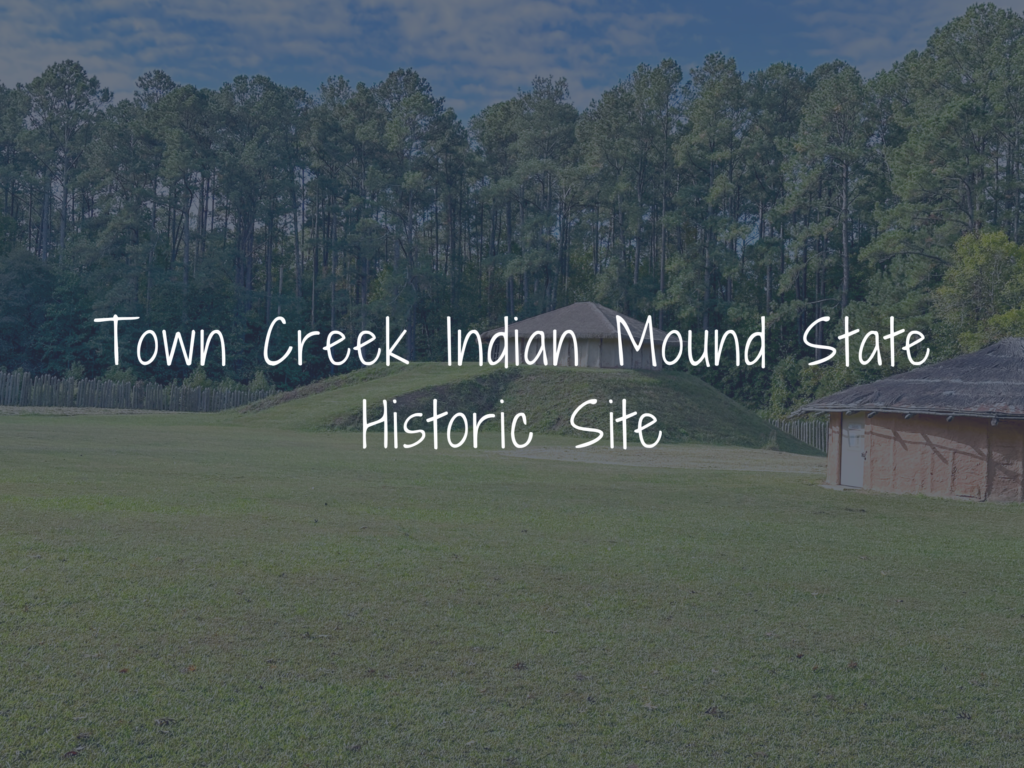
Town Creek Indian Mound State Historic Site, located near Mount Gilead, North Carolina, preserves a significant archaeological site dating back to the Pee Dee culture around 1,000 years ago. The central feature is a 50-foot-high earthen mound that likely served as a platform for various structures. Surrounding the mound are remnants of a village, providing insights into the daily lives of its inhabitants during the Late Woodland period. The site is known for its association with ceremonial and burial practices, with excavations yielding artifacts like pottery, tools, and ceremonial objects. The state historic site includes a museum showcasing these artifacts, educational programs, walking trails, and interpretive signs. Managed by the North Carolina Department of Natural and Cultural Resources, Town Creek Indian Mound offers a valuable glimpse into the history and culture of the indigenous people who once thrived in the region.

The Vance Birthplace in Weaverville, North Carolina, is situated amidst the scenic beauty of the Appalachian Mountains, serving as a poignant testament to the region’s rich history. This historic site preserves the legacy of Zebulon Baird Vance, a prominent figure in North Carolina’s narrative, within its original farmhouse where Vance, a distinguished Civil War governor and U.S. senator, was born in 1830. Visitors to the birthplace can explore seven historic and reconstructed buildings, including the family home, offering an authentic glimpse into the daily lives of early 19th-century settlers. Through interpretive exhibits and guided tours, the Vance Birthplace invites visitors to immerse themselves in the captivating history of Western North Carolina, fostering a deeper connection with the past. The Vance Birthplace is one of the many great North Carolina Historic Sites managed by the state.

